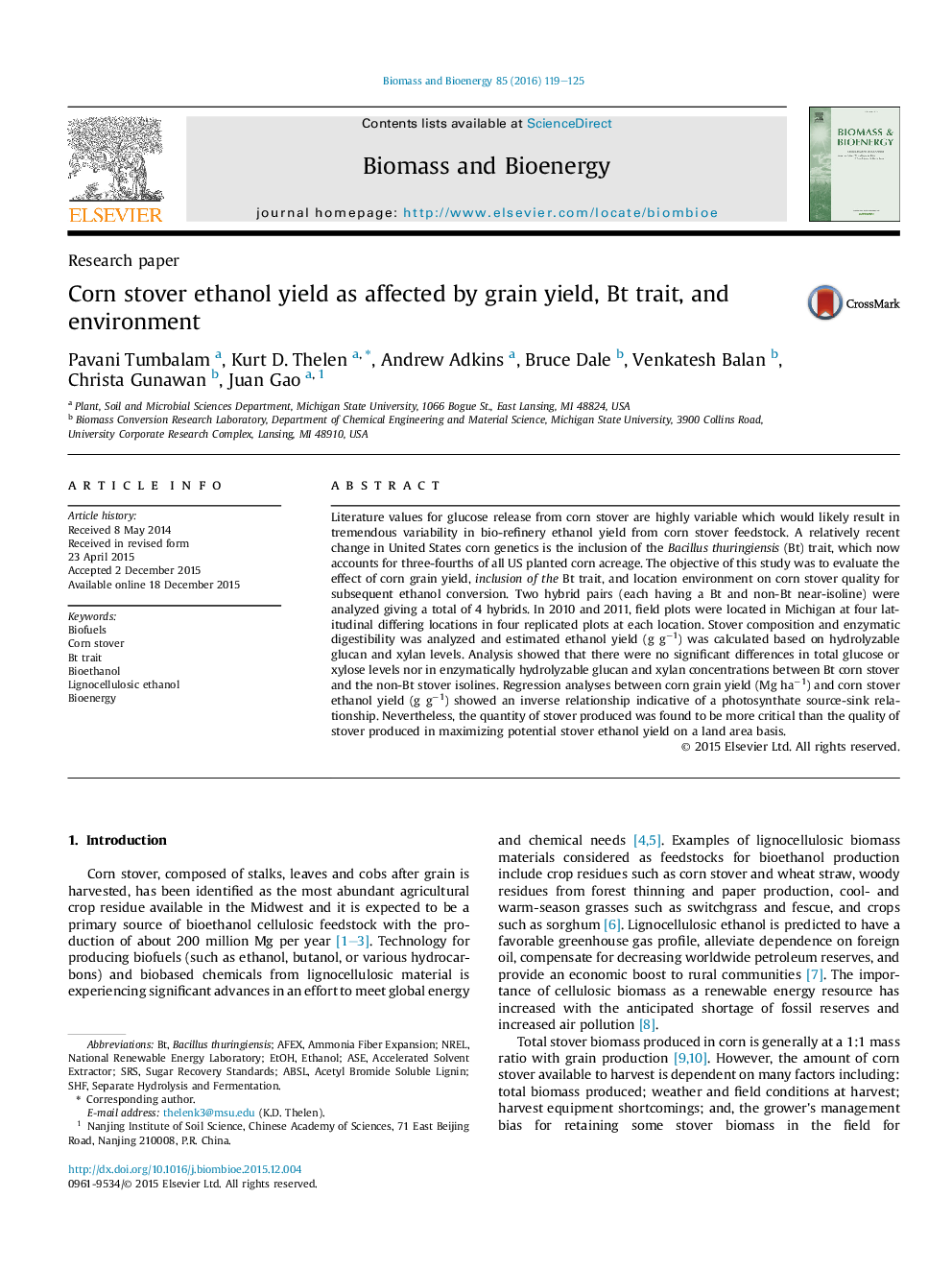| Article ID | Journal | Published Year | Pages | File Type |
|---|---|---|---|---|
| 7063508 | Biomass and Bioenergy | 2016 | 7 Pages |
Abstract
Literature values for glucose release from corn stover are highly variable which would likely result in tremendous variability in bio-refinery ethanol yield from corn stover feedstock. A relatively recent change in United States corn genetics is the inclusion of the Bacillus thuringiensis (Bt) trait, which now accounts for three-fourths of all US planted corn acreage. The objective of this study was to evaluate the effect of corn grain yield, inclusion of the Bt trait, and location environment on corn stover quality for subsequent ethanol conversion. Two hybrid pairs (each having a Bt and non-Bt near-isoline) were analyzed giving a total of 4 hybrids. In 2010 and 2011, field plots were located in Michigan at four latitudinal differing locations in four replicated plots at each location. Stover composition and enzymatic digestibility was analyzed and estimated ethanol yield (g gâ1) was calculated based on hydrolyzable glucan and xylan levels. Analysis showed that there were no significant differences in total glucose or xylose levels nor in enzymatically hydrolyzable glucan and xylan concentrations between Bt corn stover and the non-Bt stover isolines. Regression analyses between corn grain yield (Mg haâ1) and corn stover ethanol yield (g gâ1) showed an inverse relationship indicative of a photosynthate source-sink relationship. Nevertheless, the quantity of stover produced was found to be more critical than the quality of stover produced in maximizing potential stover ethanol yield on a land area basis.
Keywords
Related Topics
Physical Sciences and Engineering
Chemical Engineering
Process Chemistry and Technology
Authors
Pavani Tumbalam, Kurt D. Thelen, Andrew Adkins, Bruce Dale, Venkatesh Balan, Christa Gunawan, Juan Gao,
